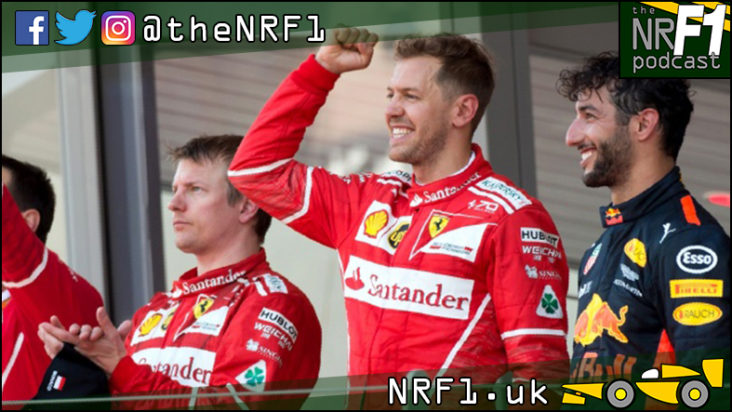Some people seem to have forgotten who Ferrari are and what they stand for

By Callum Springall
Whether you are of the opinion that Monaco is essential to Formula 1 or a processional gimmick that only stays on the calendar for the money, the 2017 edition wasn’t short of intrigue – albeit for the want of overtaking.
After a scintillating qualifying session that left the top three within 0.05s, including a front row lock-out for Ferrari that would set up a degree of controversy, both Sebastian Vettel and Kimi Raikkonen maintained their positions off the grid – with an unexpected leader in the shape of the team’s number 2 driver. I think that one has now been laid to bed. Their positions remained the case until the only round of pit stops.
However, it was said pit stop that raised some eyebrows. The Scuderia brought the leader in first – as is common practice – in order to cover off Valtteri Bottas and Max Verstappen, while Vettel was kept out for another handful of laps as the chasing pack got caught up in lapped traffic.
This was crucial in allowing the four-times champion an overcut to jump his team-mate, and cruise to the win.
Whether or not it counts as a stitch-up or any other by-word of foul play, is another matter. But it is indicative of how some seem to have forgotten what Ferrari actually stand for, and how they go about their business in achieving that.
The Maranello team holds the position as the giants of F1. How does that come about? By winning world championships, of course. If you look back throughout history, Ferrari have seldom competed for titles by fielding two number 1 drivers. The most dominant era of the team’s long and illustrious history consisted of the most mercurial and uncompromising driver in the history of the sport, Michael Schumacher, and one of the most dependable wingmen ever seen in Rubens Barrichello.
The prime example was Austria 2002. Eddie Irvine played the same role in his time at Ferrari in the late 1990s (1999 being the exception) and even Nigel Mansell was a distinct second fiddle to Alain Prost in 1990. Ferrari are serial winners and the fact the default strategy is to have a clear hierarchy of driver preference is reason for that. So why should it be any different now?
Elsewhere, it seemed Mercedes had their fair share of competition from Red Bull, with Valtteri Bottas losing out to Daniel Ricciardo and coming under late pressure from Max Verstappen.
In all honesty, the most likely outcome is some sort of false dawn for Red Bull since the tight and winding streets of Monte Carlo probably provided their best chance of a win and those extra few tenths on Saturday means that, for the remainder of the year at least, the Austrian drinks marque resembles less the team of the Vettel-Newey era and more a pair of tin cans on wheels.
Looking lower down the field and it was McLaren’s best chance at points so far in 2017, and Saturday really was a false dawn. With Stoffel Vandoorne and the returning Jenson Button both in the final top-10 shootout, the Woking team looked to have a real turn of pace.
SUBSCRIBE: Listen to The NR F1 Podcast on your chosen podcast player
But the necessity to change the MGU-K and turbo on Button’s car meant he started last despite qualifying ninth – not bad for an ambassador – and Vandoorne’s crash at the end of Q2 meant he started 12th after the application of his three-place grid penalty carried over from the Spanish Grand Prix.
For the 2009 world champion it was a solid weekend that proved what this writer already knew. He is a fast, reliable driver that would benefit just about any team on the grid; save for a suspect collision with Pascal Wehrlein.
 There were caveats for Jenson. Having been stuck behind the Sauber all afternoon, when you could argue the unsafe release should’ve warranted a harsher penalty, then the adage that if you don’t go for a gap then you are no longer a racing driver meant that when the gap appeared, you could understand him going for it.
There were caveats for Jenson. Having been stuck behind the Sauber all afternoon, when you could argue the unsafe release should’ve warranted a harsher penalty, then the adage that if you don’t go for a gap then you are no longer a racing driver meant that when the gap appeared, you could understand him going for it.
With regard to the Belgian rookie, it was an unlucky incident that cost him dear – albeit one that arguably came about because of his own misgivings at the restart – after a weekend where he was always on the pace. It should swell his confidence for the coming races.
To finish off, Force India had their worst race of the year bringing home nil points in their David vs Goliath battle with Red Bull. All in all it couldn’t really have been any better with what went down at the brightest team on the grid – if not in intelligence then certainly in colour – with Sergio Perez having a rough ride that he made worse by careering into Daniil Kvyat‘s Toro Rosso late on to squander a point.
Also down that end of the field was Jolyon Palmer and his Renault in 11th place. No, dear reader, you need not refresh your browser. That did really happen. Just thought I’d include it.
And after a terrible weekend for Lewis Hamilton, the ‘special one’ wasn’t quite special enough to gain anything more than a 19-point reverse to his main rival and victor, Sebastian Vettel to drop a full 25 points behind the German. Ouch. Maybe he should take a lesson from Ferrari’s extensive history book.
♦ Callum Springall is a blogger with the NRF1. You can follow Callum on Twitter @callumspring18

